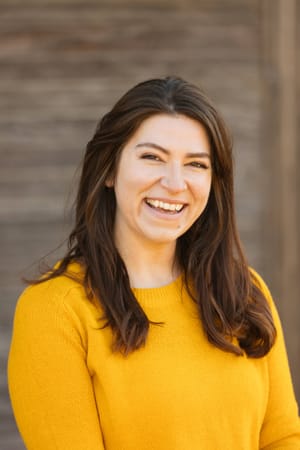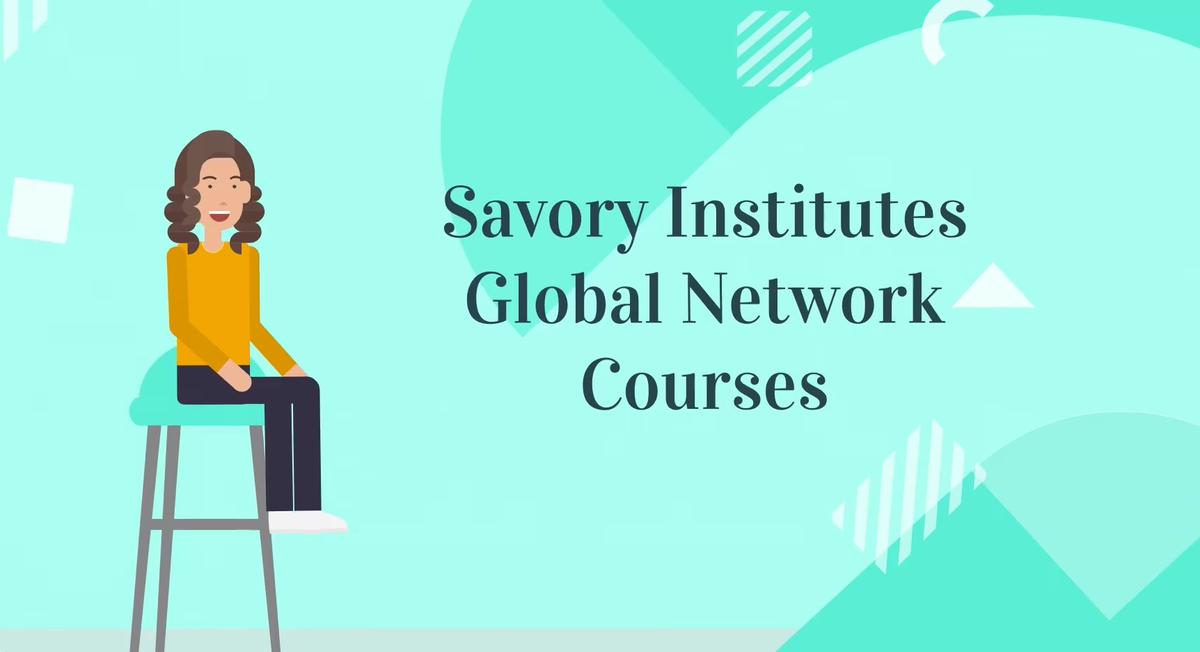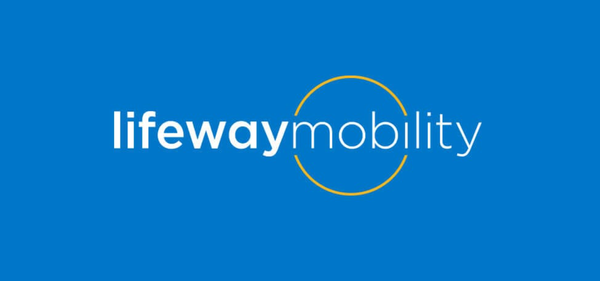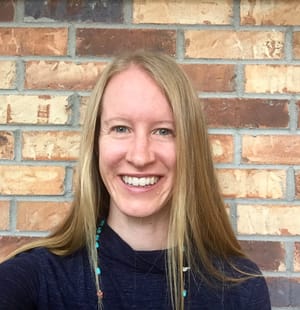Navigating tight timelines: an LXD journey
Client
The project involved working as a Learning Experience Designer (LXD) with the Savory Global Network, catering to members such as Hub leaders, educators, land managers, and ambassadors. The target audience also included learners interested in regenerative agriculture and related topics to a scientific protocol that measures land health called Ecological Outcome Verification. It also provided information on business development strategies, quality control guidelines, and network member resources.

Overview
My tasks encompassed structuring courses into coherent learning pathways through storyboarding, creating over 4 hours of edited instructional video content across 20+ lessons, and optimizing the user experience and web accessibility for global audiences. As the leader of a team of designers and subject matter experts, I guided the project toward improving accessibility features, connecting members with a unified understanding of educational knowledge and member protocols, and delivering courses within tight timelines.

Process
The project began with a discovery phase, learning about the company and organizing content still under development. I worked with my clients to reach an outcome agreement, discussing my role as a learning experience designer, expectations, considering the type of content deliverables, and how to accomplish an MVP (minimum viable product).
As we began, I asked my clients some challenging questions that highlighted areas of information that still needed to be discussed. As the designer, it was important for me to ask clarifying questions regarding the brand terminology, user experience, and the learners' prior knowledge of these courses. I had to understand the depth of their ask to action map our timeline. I needed to know what was missing and where we needed to be specific and clear to meet the learning objectives.
My biggest obstacle with this project was meeting a tight six-month deadline while tackling content development and the learning experience. Initially, the request was for 14 courses, which expanded to 22 after those questions were asked.
Here are some ways I managed to work within the tight timeline:
- I began streamlining course creation through storyboarding, clear milestones, and saving resources in one location while leveraging project management tools like Gantt charts and Asana boards to visualize tasks and deadlines.
- I maintained productivity and adaptability by implementing agile methodologies, conducting regular status meetings, and monitoring progress and points of delay in the process that could slow down the overall efficiency of building the courses. I began to share areas where we could enhance the MVP content if we had the support of additional designers who focused their skills solely on video editing quality and accessibility. At the same time, I provided media management, eLearning content strategy, copywriting, and course production.
- To minimize delays in the production process, I established clear approval processes for revisions. Additionally, I implemented Google Docs comments for continuous feedback and a system to manage changes made to multiple video files over time with different designers. I also leveraged collaboration tools, such as Dropbox and Google Drive, for seamless communication and file sharing among team members.
- My biggest goal was to ensure the project stayed on track. We developed a plan to manage risks, put in place a process to maintain quality, and catch issues early. I would update our corresponding Google Doc with comments to handle any changes to the scope effectively.
- I improved efficiency by using templates and standard processes, holding regular review meetings, balancing resources, analyzing critical paths, and continuously striving for improvement by including surveys for feedback and a file to collect backlogged ideas during development.
Outcome
As the lead designer, the project involved storyboarding, creating, and publishing over 20 lessons within six months. Despite the challenges of content development, managing multiple video files, and coordinating with subject matter experts for feedback, I enhanced online course content from existing materials and created new instructional content.
Throughout the project, I showcased strong client relationships, self-management skills, mastery of new tools like Descript and Teachable LMS, and proficiency in creative problem-solving abilities. I strengthened my skills in project management and multimedia content creation. Thanks to the speedy outcome, the client was pleased and offered additional independent contracts for LMS management, learner support, and project management of other initiatives for Savory Global. This was a fantastic opportunity to build a freelance and remote work portfolio.
To achieve my goals, I added captions and timestamps to videos, wrote copy for courses, developed content strategy, managed media and team coordination, published the courses, and set the platform up for future user experience improvements with surveys and user feedback for every course. My solutions also included developing course bundles with self-enrollments for onboarding, which helped streamline the process and made it easier for new users to get started. Overall, this project was a great success, and I was thrilled to be a part of it.
a short overview of my work
Reflection
My project was successful, and I am grateful for my many learning opportunities in a safe environment. When I started as an instructional designer, I discovered that what we do, the definitions taught by higher education and online resources, and what our clients and organizations think we do were all very different perspectives. I encourage anyone pursuing this career field to be specific about why they want to be in it and stay focused on that outcome.
It's easy to get distracted by the nuances of our profession and the technical components that it entails. It is crucial to conduct your own research because various resources and articles can assist you in comprehending the distinction between the expectations and the actuality of working as an instructional designer, learning experience designer, or any other eLearning course creation title related to learning and development. It's also important to understand the differences between LMS and eLearning authoring tools, as they are often mistaken for the same thing.
When approaching a project, it's essential to understand the client's wants, the learners' needs, and what you can offer to ensure a successful outcome. The discovery meeting is the perfect opportunity to identify these elements early on in the project and determine the type of workflow you can expect. I managed my timeline by interviewing my network for case studies, researching what other designers were saying online, and looking at the objectives I needed to meet. I was determined to make this a successful project and had to manage expectations with reality to meet our goal.
I also had areas of improvement, including expanding my design skills, project management style, and leading others. However, my favorite part was building knowledge in a subject I would have never sought out. Now, I can connect that interdisciplinary knowledge to other projects and use those skills to help other collaborative changemakers focused on sustainability. I enjoy seeking out projects in subjects in which I need to gain a strong background because it allows me to step into the learner's position with a fresh perspective. I can ask simple questions that might be overlooked because the answers might be assumed knowledge, and that's where we can lose learners.
Through my experience, I have learned that it is possible to successfully manage a project and meet its objectives within tight turnaround times with hard work and dedication. To achieve this, being a confident communicator and balancing the desired outcomes and expectations is important. Additionally, my experience has underscored the significance of continuous learning and growth in the instructional design field. It is essential to continue expanding my education and my network of professionals to enhance my knowledge and skills in this field.
I leave you with some thoughts I am still reflecting on...
- What strategies have you found most effective for managing complex eLearning projects with tight deadlines? I'd love to hear your experiences and any tips you can share.
- As an instructional designer, how do you balance meeting client expectations while ensuring an optimal learning experience for the end-users? What trade-offs have you had to make?
- Looking ahead, what do you think are the most important skills for instructional designers and eLearning professionals to develop to thrive in our rapidly evolving industry? How are you investing in your own professional growth?
Visit my website to learn more about my process, see my portfolio, or get to know me better. And please let me know if I can ever be a resource for you. I'm always happy to connect on LinkedIn.

#Project management #Teachable #Descript #Google #Agile #Deadlines #team #collaborations #instructional design #ID #learning experience design #lxd #eLearning development #course creation #media management #client relationships














Member discussion